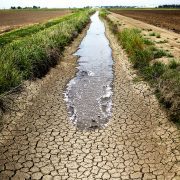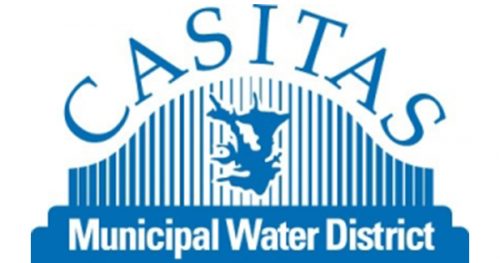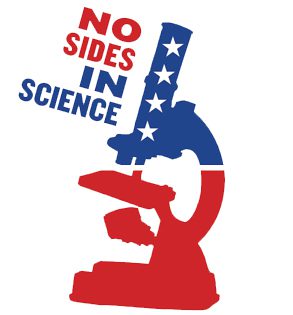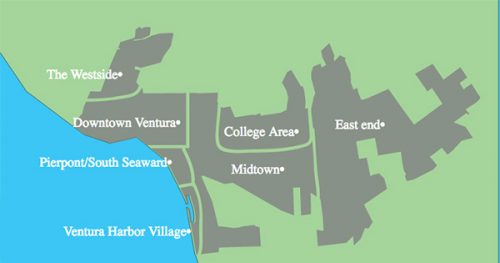What VenturaWaterPure Should Do To Be Better

“Of all the tyrannies, a tyranny exercised for the good of its victims may be the most oppressive…those who torment us for our own good will torment us without end, for they do so with the approval of their own conscience.”
—C.S. Lewis

Eight years ago, Ventura Water decided to pursue VenturaWaterPure single-mindedly. They are pursuing this course in the face of data that demonstrates it’s not in the best interest of citizens cost-wise or health-wise.
How Things Began To Go Wrong For VenturaWaterPure
Ventura Water based their decision on a faulty premise that Ventura needed additional water. The Wishtoyo Consent Decree opened the door for Ventura Water to select Direct Potable Reuse (DPR) as an integral part of VenturaWaterPure. Since 2012, nobody has tested the assumptions or sought lower-cost alternatives.
Ventura Water will do anything to pursue this goal, even when confronted with facts to the contrary. In June 2018, a group of concerned citizens went to each Councilmember to show them DPR was not approved and deemed not safe, yet. When the Council presented that fact to Ventura Water, they changed course slightly to Indirect Potable Reuse (IPR), but they didn’t drop VenturaWaterPure or challenge their assumptions.
More recently, when Ventura Water presented to the Water Commission, they said State Water was unreliable and they can only count on water 33% of the time. Commissioners pointed out that historical data show State Water was reliable 50%-75% of the time. Ventura Water backtracked again and said they’d upgrade their data, but they never questioned their assumptions.
What These Decisions Cost You
A September 12, 2019 report titled Ventura Water Supply Projects and Alternatives, commissioned by Ventura Water (Appendix E starting on pg. 405), shows estimated project costs of another $320 Million plus the annual operating expenses of $29.Million for VenturaWaterPure. The added expense could saddle Ventura’s citizens with another $260 per month in water rates unless Ventura Water takes an alternative direction.
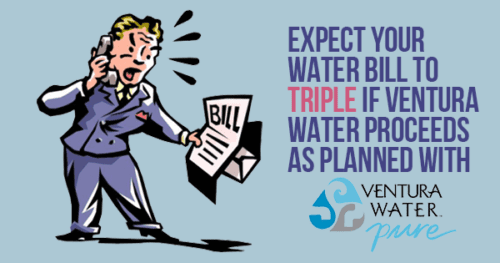 Spreading $320 Million over ten years, divided equally among the 32,000 water ratepayers in Ventura, will cost about $83 more per month on your water bill. An extra 20-27 employees are required to operate the new facility, adding to the Ventura Water’s payroll, benefits and pensions. If Ventura Water adds the minimum number of new employees, using an average annual cost of $100,000 per person, plus benefits, will add $29.1 Million annually. Dividing $29.1 Million by 32,000 water ratepayers adds another $76 per month to each water bill.
Spreading $320 Million over ten years, divided equally among the 32,000 water ratepayers in Ventura, will cost about $83 more per month on your water bill. An extra 20-27 employees are required to operate the new facility, adding to the Ventura Water’s payroll, benefits and pensions. If Ventura Water adds the minimum number of new employees, using an average annual cost of $100,000 per person, plus benefits, will add $29.1 Million annually. Dividing $29.1 Million by 32,000 water ratepayers adds another $76 per month to each water bill.
Assume the average monthly water bill in Ventura is $100 per month ($200 every two months) when adding another $83 for building and $76 for operations and maintenance, the new average total is $260 per month. The amount could be even higher if Ventura Water hires more than 20 new employees.
Known as the Carollo Report, this September 12, 2019 report looks at the high price of the VenturaWaterPure project. It also attempts to provide alternatives that would be much more cost-effective and allow Ventura to meet its three primary water goals. Ventura Water has rejected all lesser cost alternatives.
Ventura’s goals remain: 1) remove tertiary treated wastewater from the Santa Clara Estuary, 2) increase the water supply and 3) improve the water quality in the east end of Ventura.
The Driving Force Behind VenturaWaterPure
 Ventura Water has already spent eight years to meet the demands of a Federal Consent Decree. Ventura must fully comply with the removal of remove tertiary treated wastewater from the Santa Clara Estuary by 2025. To achieve this mandate, VenturaWaterPure was set in motion to recycle its wastewater into something useful.
Ventura Water has already spent eight years to meet the demands of a Federal Consent Decree. Ventura must fully comply with the removal of remove tertiary treated wastewater from the Santa Clara Estuary by 2025. To achieve this mandate, VenturaWaterPure was set in motion to recycle its wastewater into something useful.
In 2012, there was no idea what the costs of VenturaWaterPure would be, from where the money would come or whether it was scientifically possible. The ideal outcome would be to make the recycled water drinkable and add to the dwindling water supply. The idea of ‘toilet to tap’ originated on the premise that ‘if the astronauts can drink it, we can too.’ That mantra assumes a great deal but is not that simple.
What Is Ventura Willing To Spend?
According to the Carollo Report, the current VenturaWaterPure carries a price tag of over $250 million and another $70 million to complete the project totaling $320 million. Do you spend another $320 million if Ventura Water can meet its three goals for less regardless of the money already spent? And if you do, how will a family afford a 260% water rate increase?
Today’s Plan
The current VenturaWaterPure plan calls for the construction of an advanced water purification facility, new pipeline infrastructure and three injection wells. This current plan also requires the addition of 20 to 27 more positions, with salaries, benefits and pensions. The Carollo Report indicates that much of the costs and liability that Ventura Water plans to take on as an independent project could be shared and reduced on a more regional basis.
So, What’s The Alternative?
It is not too late to reconsider some of the alternatives suggested in the Carollo Report. The redirection of the first part of the planned $270 million project does not mean the end of VenturaWaterPure. VenturaWaterPure can be completed at a savings of $270 million and meet all the city’s goals.
The alternative is for Ventura Water to construct a pipeline to the United Water settlement ponds near the intersection of 118 and Vineyard Avenue. The water can then percolate into the Oxnard plain basin. Ventura Water had always planned to inject the well water into the Oxnard plain basin under its current plan.
The United Water settlement alternative plan eliminates the need for Ventura Water to construct the advanced water purification facility, pipeline infrastructure and three injection wells. That is a savings of $320 Million. It would require the construction of nine miles of a 24-inch pipeline with a cost of about $50 million, so the net saving is still $270 Million.
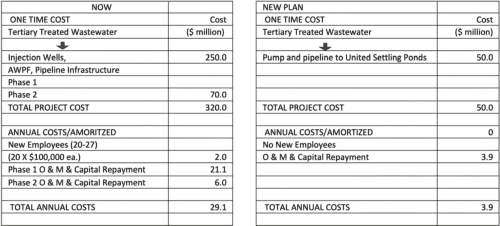
There will need to be negotiations with United Water to complete the water transfer loop. Given the Groundwater Management act legislation (GMA), agencies transferring water to other agencies require cooperation in water exchanges. In that process, Ventura Water can obtain additional water allocations to add to the water supply.
Why Would There Be Any Objection?
The possible resistance to redirecting the tertiary treated Santa Clara Estuary wastewater to the United Water Saticoy Spreading Grounds is that Ventura Water may fear losing control of their water resource. This concern is unfounded, however. All water injected into any wells, may be drawn out by any water user with access to the Oxnard plain basin.
Improves The VenturaWaterPure Program
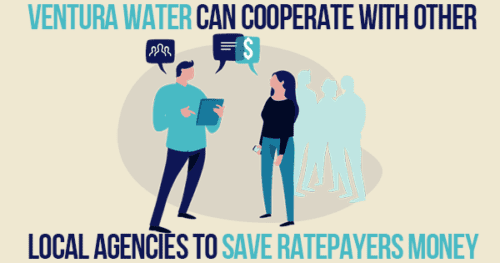 Saving $270 million by redirecting the Santa Clara Estuary tertiary treated wastewater to the United Water Saticoy spreading grounds does not derail the other Ventura Water goals. With the continued construction of the State Water Project, State Water will provide an additional water resource to compliment the river, groundwater and recycling programs in place. The State Water will also improve the water quality for the east end of Ventura. Additionally, the tertiary treated wastewater to the United Water Saticoy spreading grounds would remain available to be drawn out of the Oxnard Basin just as it would be if injected into any wells currently planned.
Saving $270 million by redirecting the Santa Clara Estuary tertiary treated wastewater to the United Water Saticoy spreading grounds does not derail the other Ventura Water goals. With the continued construction of the State Water Project, State Water will provide an additional water resource to compliment the river, groundwater and recycling programs in place. The State Water will also improve the water quality for the east end of Ventura. Additionally, the tertiary treated wastewater to the United Water Saticoy spreading grounds would remain available to be drawn out of the Oxnard Basin just as it would be if injected into any wells currently planned.
Editor’s Comments
The challenge in 2012 was to comply with the Federal Court Decree, and the chosen solution was to convert the estuary into drinkable water. Ventura Water created VentruaWaterPure on the pretense that the cost of moving the water away from the estuary could be justified because we could then drink it. At the time, the costs not known and the scientific reports were incomplete. Fixated on controlling all water resources, and reject all alternatives, sounded good eight years ago. However, the original plan is too costly now, and the scientific studies still discourage drinking the treated wastewater.
Utilizing the regional resources to accomplish the same goals at a lower cost is better for Ventura. With this one primary change, VenturaWaterPure will succeed, and the citizens will save as much as $137 per month or $1,644 per year on their water bill.
Call or email your City Councilmember to tell them you want to save $270 Million and not have your water rates nearly triple.
Tell City Council you want to save $270 Million and not have your water rates nearly triple.
Below you’ll find the photos of our current City Council. Click on any Councilmember’s photo and you’ll open your email program ready to write directly to that Councilmember.
 |
 |
|
 |
 |
|
 |
 |
|
 |
For more information like this, subscribe to our newsletter, Res Publica. Click here to enter your name and email address.

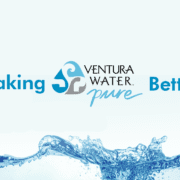



 For the second time in four years,
For the second time in four years, 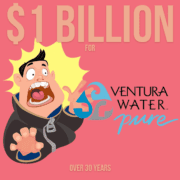 VenturaWaterPure will cost $1 billion over 30 years. That’s a considerable sum of money for the community to absorb. Water bills will double to pay for VenturaWaterPure’s infrastructure alone. Operations and maintenance costs will add even more. Remember, water costs already went up by $220 million with water and wastewater increases in 2012-13.
VenturaWaterPure will cost $1 billion over 30 years. That’s a considerable sum of money for the community to absorb. Water bills will double to pay for VenturaWaterPure’s infrastructure alone. Operations and maintenance costs will add even more. Remember, water costs already went up by $220 million with water and wastewater increases in 2012-13.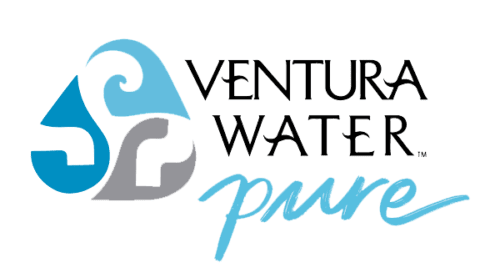 Ventura Water has confused the City Council by combining two different ideas to falsely heighten the urgency to drink wastewater. Since 2011, the campaign has been “We are short of water,” they say, “and the best way to meet that shortage is to drink wastewater.”
Ventura Water has confused the City Council by combining two different ideas to falsely heighten the urgency to drink wastewater. Since 2011, the campaign has been “We are short of water,” they say, “and the best way to meet that shortage is to drink wastewater.”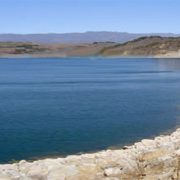 Ventura has enough drinking water for the next 15 years at current consumption rates, according to the
Ventura has enough drinking water for the next 15 years at current consumption rates, according to the 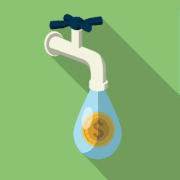 IPR is inefficient and will not meet Ventura Water’s projections. Orange County and Monterrey use IPR already. IPR shows a net water loss of 23%, based on Orange County’s experience. If VentuaWaterPure treats 4.5 million gallons per day of tertiary water, this will yield approximately 3.5 million gallons per day of drinking water, or about 3,900 Acre-Feet per year (AFY). According to the Final Environmental Impact Study, that is 1,500 AFY short of the 5,400 AFY needed to meet Ventura’s estimated demand.
IPR is inefficient and will not meet Ventura Water’s projections. Orange County and Monterrey use IPR already. IPR shows a net water loss of 23%, based on Orange County’s experience. If VentuaWaterPure treats 4.5 million gallons per day of tertiary water, this will yield approximately 3.5 million gallons per day of drinking water, or about 3,900 Acre-Feet per year (AFY). According to the Final Environmental Impact Study, that is 1,500 AFY short of the 5,400 AFY needed to meet Ventura’s estimated demand. One billion dollars is a large bet to place with the taxpayer and ratepayer money for a process that is questionable among scientists. There are cost-effective alternatives available, but it’s unlikely they’ve been examined since the initial decision to create VenturaWaterPure was made in 2011. Times change. Circumstances change. Now is the time to reconsider options to be sure we’re making the best choice available.
One billion dollars is a large bet to place with the taxpayer and ratepayer money for a process that is questionable among scientists. There are cost-effective alternatives available, but it’s unlikely they’ve been examined since the initial decision to create VenturaWaterPure was made in 2011. Times change. Circumstances change. Now is the time to reconsider options to be sure we’re making the best choice available.

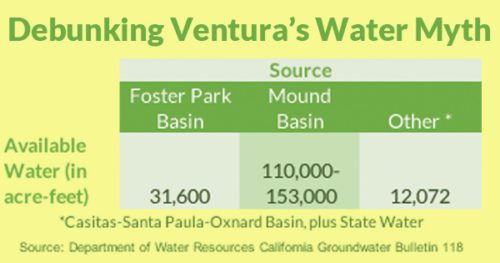

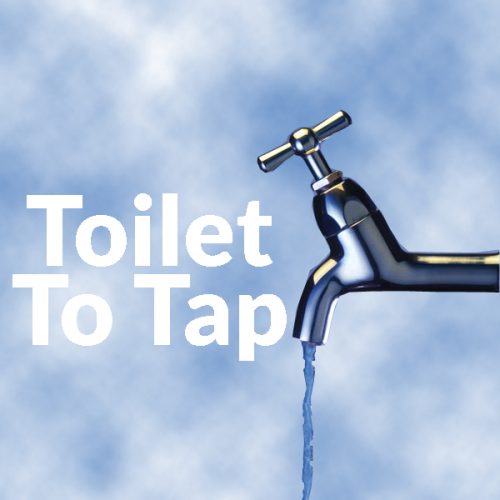 Costing over $500,000,000 is not the only issue. The more significant issue is that the City Council assumed DPR water was safe to drink.
Costing over $500,000,000 is not the only issue. The more significant issue is that the City Council assumed DPR water was safe to drink.  However, the Consent Decree says the court can extend the time limit in the event of construction constraints, financing problems, or an emergency. It requires Ventura to petition the court requesting an extension, or an agreement with the plaintiff and their lawyers. That has not happened.
However, the Consent Decree says the court can extend the time limit in the event of construction constraints, financing problems, or an emergency. It requires Ventura to petition the court requesting an extension, or an agreement with the plaintiff and their lawyers. That has not happened. On February 4, 2019, Council Member Jim Friedman asked our City Attorney, Gregory Diaz about extending the deadline.
On February 4, 2019, Council Member Jim Friedman asked our City Attorney, Gregory Diaz about extending the deadline.
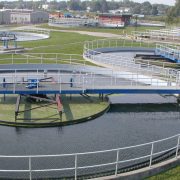

 Ventura needs to get its priorities straight about water—and fast. On July 9th, Ventura Water will ask the City Council to approve direct potable reuse (DPR). Ventura Water views DRP as a primary alternative source for increased drinking water. The project will cost $538 million of taxpayer dollars. The trouble is, it’s an untested, unproven and unregulated solution to our water needs. Why would the City Council gamble with the health of its citizens?
Ventura needs to get its priorities straight about water—and fast. On July 9th, Ventura Water will ask the City Council to approve direct potable reuse (DPR). Ventura Water views DRP as a primary alternative source for increased drinking water. The project will cost $538 million of taxpayer dollars. The trouble is, it’s an untested, unproven and unregulated solution to our water needs. Why would the City Council gamble with the health of its citizens?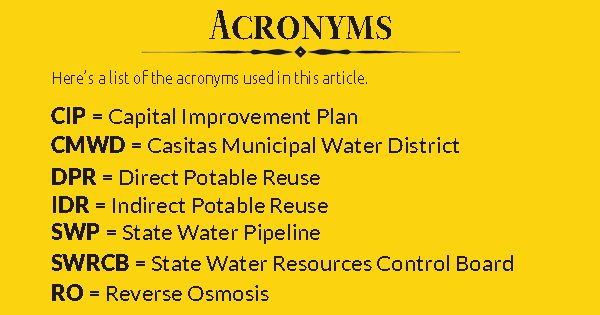 Two legal agreements jeopardize Ventura’s water supply. The first was a Consent Decree requiring Ventura to cease putting 100% of its treated wastewater into the Santa Clara River estuary. It needs to be diverted somewhere else by January 2025.
Two legal agreements jeopardize Ventura’s water supply. The first was a Consent Decree requiring Ventura to cease putting 100% of its treated wastewater into the Santa Clara River estuary. It needs to be diverted somewhere else by January 2025.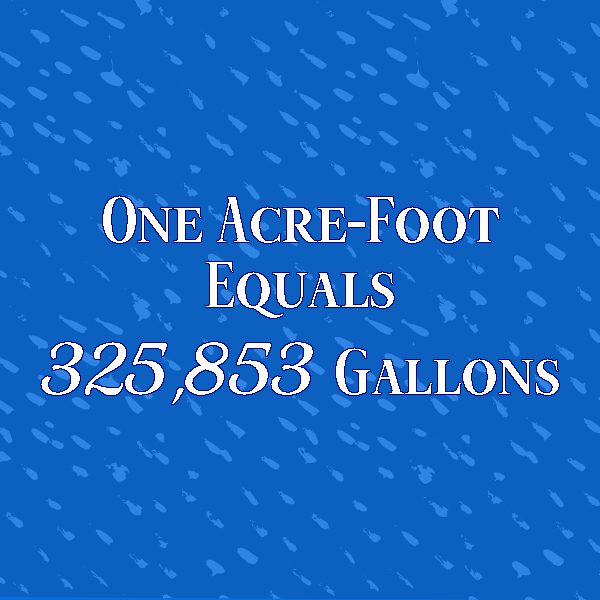 The new Casitas Water contract entitles Ventura an amount of water based on projected needs and adjusted for drought staging conditions. Ventura Water anticipates our water needs at 5,669 acre-feet per year by 2025. By then, they expect we’ll be out of our current drought conditions. Under the1995 contract, Ventura was allowed a minimum of 6,000 acre-feet of water per year. That water could be used in the western part of Ventura (everything west of Mills Road) and the eastern part of the city, if necessary. The new contract changes that and puts East Ventura at a disadvantage. The old agreement allowed Ventura to blend Casitas water with the East End to achieve better quality.
The new Casitas Water contract entitles Ventura an amount of water based on projected needs and adjusted for drought staging conditions. Ventura Water anticipates our water needs at 5,669 acre-feet per year by 2025. By then, they expect we’ll be out of our current drought conditions. Under the1995 contract, Ventura was allowed a minimum of 6,000 acre-feet of water per year. That water could be used in the western part of Ventura (everything west of Mills Road) and the eastern part of the city, if necessary. The new contract changes that and puts East Ventura at a disadvantage. The old agreement allowed Ventura to blend Casitas water with the East End to achieve better quality. 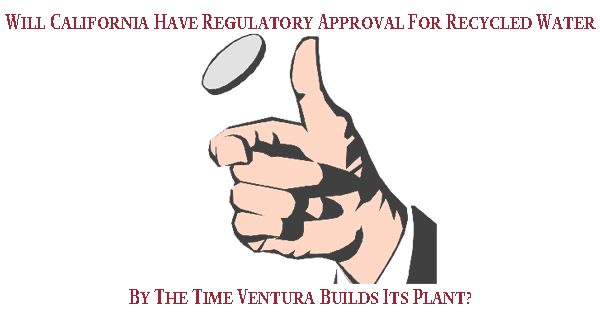 In August 2016, a report by a state-appointed panel of experts concluded it was “technically” feasible to use DPR, but there are serious health risks. Here are some fundamental problems outlined:
In August 2016, a report by a state-appointed panel of experts concluded it was “technically” feasible to use DPR, but there are serious health risks. Here are some fundamental problems outlined: The cost of DPR wastewater is high. According to the Capital Improvement Plan (CIP), the wastewater and water costs will total approximately $538 million once financing costs are added. Included in those costs are advanced purification facilities to treat the wastewater that will cost $77.7 million. Also included is another $170 million to pump the water north to the desalination/Reverse Osmosis plant. Other infrastructure improvements comprise the remaining costs—including a brine line to carry away contaminants from the new RO plant.
The cost of DPR wastewater is high. According to the Capital Improvement Plan (CIP), the wastewater and water costs will total approximately $538 million once financing costs are added. Included in those costs are advanced purification facilities to treat the wastewater that will cost $77.7 million. Also included is another $170 million to pump the water north to the desalination/Reverse Osmosis plant. Other infrastructure improvements comprise the remaining costs—including a brine line to carry away contaminants from the new RO plant. The City Council must make a policy decision now and direct Ventura Water to concentrate on the importation of State Water immediately. The current effort to plan, finance and build a VenturaWaterPure treatment plant and RO plant to process recycled water for DPR by 2025 must stop or at the very least be delayed until further study. We only hope that the City Council has the leadership and strength to change course and not feel bound by this misguided concept of past water leaders.
The City Council must make a policy decision now and direct Ventura Water to concentrate on the importation of State Water immediately. The current effort to plan, finance and build a VenturaWaterPure treatment plant and RO plant to process recycled water for DPR by 2025 must stop or at the very least be delayed until further study. We only hope that the City Council has the leadership and strength to change course and not feel bound by this misguided concept of past water leaders.






